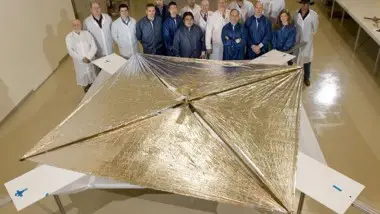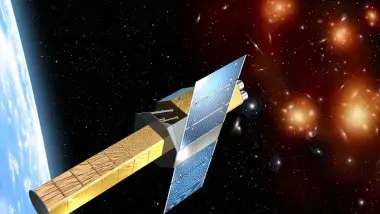Researchers from Baylor University in Texas have developed a new approach to creating a warp bubble that can create warp drive propulsion at velocities greater than the speed of light without violating special relativity. The novelty of this approach lies ...
New Evidence Supports Ice Age Comet Theory
Recent geological evidence gathered in Ohio and Indiana has been verified by a University of Cincinnati assistant professor as support of a comet theory, claiming a comet explosion over earth was the cause of drastic changes to life on our ...
Evidence of Water in Moon’s Interior
A research team from Brown University has found for the first time evidence of water deep within the moon. The researchers believe the water was contained in lunar magmas ejected more than 3 billion years ago. The new discovery strongly ...
The New Face of Mercury
Recent analysis of data collected in January 2008 by NASA’s Mercury Surface, Space Environment, Geochemistry and Ranging spacecraft has shown that Mercury’s volcanoes were involved in plain formation and suggest that its magnetic field is actively produced in the planet’s ...
Proton-Electron Mass Constant for 6 Billion Years
Research carried out at the Max Planck Institute for Radio Astronomy has shown there has been practically no variation in the proton-electron mass ratio over the last six billion years. The research was based on studying the spectra of light ...
NanoSail-D – A Solar Sail in Space
NASA researchers in collaboration with a team from Ames Research Center are planning to launch a solar sail dubbed NanoSail-D from Omelek Island in the Pacific Ocean during a window extending from July 29th to August 6th. If successful, NanoSail-D ...
Dark Matter is Denser in the Solar System
Dark Matter is a ubiquitous and mysterious type of matter that comprises about 23% of the energy density of the universe, much more than the 4% accounted for by the visible and more familiar matter known as baryonic matter. The ...
SXS – X-Ray on the Universe
NASA has recently approved the construction of the High-Resolution Soft X-Ray Spectrometer (SXS), an instrument devised to study the extreme environments of the universe. The new instrument will help researchers explore dark matter on a large scale as well as ...
First Underwater Neutrino Telescope
Construction of the first underwater neutrino telescope, Antares, has recently been completed. Since early June its last two detection lines of have been probing the bottom of the Mediterranean for neutrinos of cosmic origin. Currently 12 detection lines are aimed ...
Mars’ soil is like Antarctica’s
NASA’s Phoenix Mars Lander scraped the icy soil of the “Wonderland” area on June 26, confirming that subsurface soil and icy soil can be sampled at a single trench. Now, Phoenix scientists are assured they have a completed the soil-layer ...








